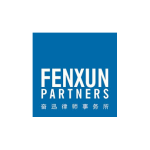China is considering reforming its volatile IPO market. But the 2015 market crash has made the nation more cautious
China's IPO regulatory approach has swayed between liberal and conservative extremes while bouncing along with the ups and downs of its secondary market. How and when can China establish a market-based regulatory system?
As of June 30 2016, there were 2,887 listed companies on the Shanghai and Shenzhen stock exchanges with a total capitalisation of RMB51.61 trillion ($77 billion). This gives China the world's second-largest stock exchange market behind only the US. Since 2000, the China Securities Regulatory Commission (CSRC) has commissioned the Shanghai Stock Exchange to further develop the main board and commissioned the Shenzhen Stock Exchange to develop the small and medium-sized enterprise board and the growth enterprise board (GEB).
From its beginning in 1990, China's IPO market has been constantly plagued by an extremely long backlog of IPO applications, excessively high new share valuations, inefficient market regulation and ineffective crisis management. The CSRC's policies have vacillated when confronting: whether to suspend the IPO review process to rescue markets during a crisis; whether and how to control the pricing of new shares; and whether and how to introduce the IPO registration system to replace the current approval system. Resolving these issues has become increasingly urgent since the global financial crisis in 2008.
China's unique market
While the stock exchange markets in the US and China are the two largest in the world, their development status, market cultures and regulatory approaches differ tremendously. The US has a mature market characterised by dispersed ownership that creates agency issues. The US market features recurrent crises and reforms and is driven by a market culture based on sanctity of contract, rule of law and litigation. On the other hand, China is an emerging and transitional market dominated by family-controlled and state-owned issuers and listed companies. Its market culture still relies on personal influence, governmental approvals and administrative appeals.
In the US, the SEC was established more than a century after the New York Stock Exchange came into being with the Buttonwood Agreement. In other words, a thriving market came first and its effective regulation at the federal level only much later. The goal of federal regulatory reform has followed a pattern of retaking powers from the market after financial crises. In China, however, the government first developed a market regulatory regime before its stock exchanges were established. Now, the goal of central government regulatory reform is to gradually devolve power to the markets on pace with reform and liberalisation in other economic sectors. The different starting points for each nation means that a market-based regulatory approach which works well in the US does not always fit the developmental approach in China.
IPO supply control
China's unique market history can be seen in its periodic accelerations, decelerations and suspensions of the IPO review process since 2007.
Due to the huge supply of IPOs in 2007 and the global financial crisis in 2008, during which the Shanghai A share Index dropped from its historic high of 6,124 to its historic low of 1,664, the CSRC suspended its IPO review process in December 2008. When the central government introduced a stimulus package of RMB4 trillion to help boost the economy, the CSRC reinstated the IPO process in June 2009 and launched the GEB in October 2009. In response to the central government's call to attract capital to the substantive economy instead of the real estate market, the CSRC in 2010 expedited its IPO review process for GEB listings.
From 2009 to 2011, China's IPO market topped the world IPO league table in terms of both number and aggregate size of offerings. In 2009, 2010 and 2011, there were 99 IPOs, 347 IPOs and 282 IPOs respectively, worth $27.5 billion, $71.99 billion and $44.8 billion respectively. This overhang of new share issuances and the increasing pipeline of future IPOs resulted in a decline in the A share market for the three-year period ending on December 31, 2012 – one of the steepest declines in the world for that period. In early 2012, to help create a stable social environment for the change in government scheduled later that year, the CSRC slowed the IPO review process. And when the stock index hit a new low in July 2012, the CSRC once again suspended the IPO review process.
|
|
"China shifted its preference from the disclosure-based US system to a so-called China-style registration system" |
|
|
In January 2014, the CSRC reopened the IPO market with a series of market-based IPO reforms. In the year leading up to China's protracted stock market crash, which started on June 12 2015, state-owned media actively encouraged investment in the stock market. This encouragement expressed a policy shift designed to beef up the equity market and reflected the fact that it was no longer feasible for the banking industry (including various forms of shadow banks) to further increase their leverage ratios to help maintain China's GDP growth rate. Even today debt bubble risk remains high in the real-estate industry, local government financing vehicles, and industries plagued by excessive overcapacity and weak competition.
As investors responded enthusiastically to the new state policy, many plowed borrowed money into the stock market. Often, this money was borrowed from unlicenced internet-based brokers. When the CSRC investigated and halted these illegal lending activities for fear of a stock bubble burst, it caused sweeping sell-offs and under-margin forced sales. And so began a vicious downward cycle of price decreases and margin calls, leading to the protracted crash that lasted until July 9 2015. During that time, the Shanghai stock index fell 30%. The CSRC again suspended its IPO review process on July 4 2015 but quickly resumed it on November 6 2015 when the markets calmed.
However, the backlog of IPO applications remains high. Although the CSRC took advantage of the market window to introduce 125 IPOs in 2014 and 220 IPOs in 2015, the decelerated IPO review process remains in place because of lingering sluggishness in the secondary market following the 2015 stock crash. On August 11 2016, 850 IPO applications were pending with only 104 of those having received approval from the IPO Review Committee. Based on past progress, it would take at least five years to relieve the current application backlog. Without a doubt, the most pressing issue on the CSRC's agenda is how to clear this IPO backlog.
IPO pricing control
China's stock market has been notorious for excessively high IPO valuations, which has led to large fluctuations in the overall market. Although a market-oriented IPO pricing inquiry mechanism has been in place since 2005 and was reinforced in 2009, most believe that the pricing inquiry mechanism has been distorted by interest groups consisting of issuers and their underwriters.
Despite existing securities laws already having general anti-manipulation provisions prohibiting underwriters from inducing investors to bid for or purchase securities in a distribution by irregular means, it remains an open secret that underwriters frequently inflate the final offer price by enticing institutional investors to make artificially high bids and adjusting the lot winning rate during the book-building process.
|
|
"China’s stock market is notorious for excessively high IPO valuations" |
|
|
As the CSRC placed a high priority on the market's self-correction system as well as utility for the sell-side, the CSRC was not ready to introduce tough measures to regulate and control IPO share prices until April 2012. Among other requirements, the CSRC also extended its disciplinary penalties directly to an issuer and its directors and managers if an IPO's offering price is 25% higher than the average P/E ratio of listed companies in the same industry and the issuer and the company's actual profits are lower than the profit forecast in the prospectus. As a result, the suppressed valuation in the primary market has caused huge discrepancies between primary and secondary market prices. This has further led to sharp speculative gains in new stocks on their trading debuts and sharp losses for subsequent buyers in the secondary market.
When the CSRC resumed its IPO review in January 2014, it suspended price controls to address new share over-subscription. In connection with this effort, the CSRC also allowed controlling shareholders to transfer their existing shares as part of the IPO offerings. These changes, however, led to controlling shareholders sharply reducing their holdings at high prices, which spurred intense discontent among retail investors and the media. As a result, the CSRC resumed its price controls in June 2014.
IPO review system reforms
Eventually, China will move away from its IPO approval system. The question is whether a pure disclosure-based system or a registration system should be adopted in its place. Moreover, questions remain about how to safely introduce a new system. Currently, China is leaning toward a registration system.
In designing a proposal for a new IPO system, the CSRC shifted its preference from the disclosure-based US system to a so-called China-style registration system (incorporating limited review like in Hong Kong) due to China's less mature market development and conditions. With the market crash in 2015, the Chinese government has shelved the registration proposal and listed it as a long-term study plan.
In deciding what form the registration system should take, the CSRC has had to consider whether administrative enforcement and judicial remedies can protect investor interests in China. Without these protections, any registration system would become a game of chance for investors trying to avoid fraudulent issuers exploiting access to capital markets. As such, the new chairman of the CSRC, Liu Shiyu, has argued that, as China's judicial system and CSRC enforcement are still weak, the CSRC should continue exercising merit review (ie an approval function) until the rule of law takes root in the securities industry. In addition, Liu emphasised that the establishment of a mature multi-layer capital market with a particular focus on the over-the-counter market should also be another pre-condition to fully introducing a registration system without any approval features. It is hoped that these multiple channels can divert and avoid the current IPO backlog.
Looking ahead
The CSRC has experimented with both short-term regulatory interventions and more hands-off market-based methods. Neither has been capable of delivering a quick cure for the IPO market problems. Instead, the CSRC is seeking a prudent, long-term regulatory approach to strike a delicate balance between promoting capital formation and protecting investor interests.
Inside China |
Inside China, written by FenXun Partners’ Xusheng Yang and Sue Liu, is an insight into aspects of the China market that often elude the naked eye. Yang is a specialist in China’s financial markets and institutions, having started his career at the China Securities Regulatory Commission and then co-founding FenXun in 2009. Liu’s practice focuses primarily on the asset management industry, and has previously worked as an associate at Skadden Arps Slate Meagher & Flom in New York. |

